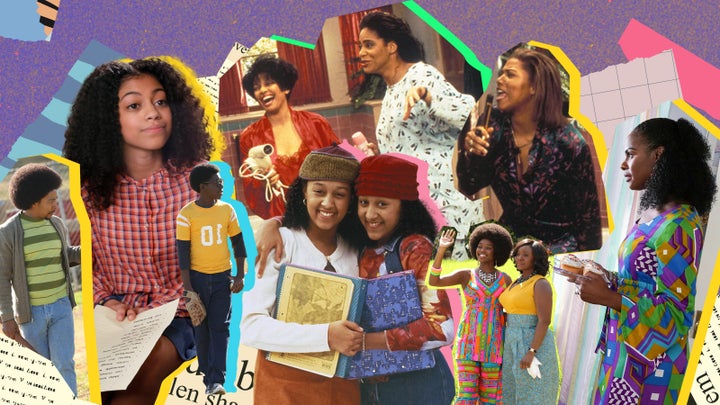
The glitz and glamour of entertainment is nothing without the people who dress today’s biggest stars. For “Who’s Behind the Clothes,” HuffPost spotlights stylists and costume designers who have delivered some of our favorite celebrities’ or characters’ most memorable looks.
“A Different World.” “Living Single.” “Sister, Sister.” These Black ’90s series defined the style of a generation, thanks to one costume designer: Ceci.
Born and raised in Los Angeles to her Panamanian parents, Ceci’s ability to fashion garments was more about survival than creativity. Growing up, she couldn’t afford the newest, trendiest outfits; she got a job at the age of 12 just to buy school clothes. By age 4, Ceci had already learned how to sew by watching her mother. Those skills would later translate into her professional career.
“That thing about Black shows back then,” said Ceci, “Black shows did not get the same budget as white shows. There was a big disparity and people were always stuck. You were forced to be more creative, which once again goes back to my upbringing. I think it had a lot to do with how I grew up, and that informs my style, tastes and sensibility.”
Although she had a penchant for fashion, Ceci double-majored in economics and social welfare at the University of California at Berkeley, later landing a six-figure corporate job at Xerox. “I was making money, but I was miserable,” Ceci said, in retrospect. Her self-expression was stifled as her colorful work attire was dubbed “unprofessional,” and didn’t necessarily fit the culture there.
So, she packed her bags and trekked to LA, where she would create a legacy that spans far beyond a cubicle — to nearly every television in America.
In the ’90s, Ceci’s pulse on style captured the attention of countless Black young adults and the generations to follow. We envied Whitley Gilbert’s blazers and pearls, sought after Khadijah James’ vintage African-American College Alliance sweatshirts, and wished for twin sisters like Tia and Tamera Mowry just so we could have someone to coordinate outfits with.
With over 30 years of experience as a costume designer, Ceci has proven that she’s still got it, from her work on Season 1 of “The Wonder Years” reboot to Netflix’s “Dear White People” and more. On the 24th anniversary of the “Sister, Sister” series finale, Ceci talked to HuffPost about her extensive career for “Who’s Behind the Clothes.”
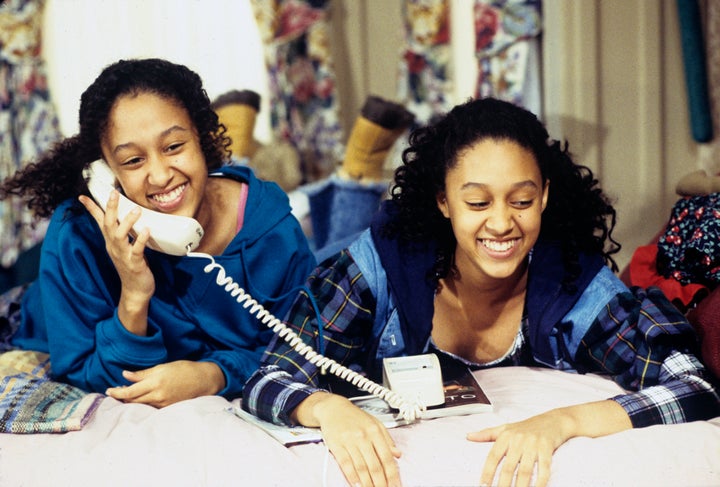
What does it mean to you to have your legacy styling iconic Black sitcoms celebrated and preserved online? Although it’s now been renamed, did you know there was a whole Instagram page called “@everyoutfitinlivingsingle?”
Are you serious? I didn’t even know about that! It’s really weird. When you’re working and you’re in the middle of your career, you’re not thinking about building a legacy — at least I wasn’t. I mean, maybe some people are now. I’m getting to the age where it’s like, yes, you want to have a legacy or have somebody be able to say something at your funeral. So, you start thinking about that and you’re like, “Oh, well, did I do enough?” I’m really just coming to full awareness of the fact that people had such admiration for the shows. With social media now, you have perfect strangers DMing you all kinds of crazy things like, “Where can I find this particular outfit?” I’m like, “In a time capsule, because that was 35 years ago!” It’s very odd to me that people really have an appreciation; I’m grateful. I think it’s amazing that I was able to be a part of these shows that are now iconic, and they have such a following and new audiences. To be a part of it, it was certainly an honor. At the time, I wasn’t thinking about it like that, but in retrospect, for sure.
How were you thinking about it and approaching your work at the time?
I think I was approaching it from the standpoint of wanting to be creative, introduce some looks that were things that I innovated, utilize designers who were making one-of-a-kind pieces and approached me and said, “What do you think about this or that?” I think most of those shows, if not all of those shows, were really fun to work on when the production team, the directors and the actors gave me the space to be expressive, and to do what I thought was best creatively. When you’re able to do that is when you’re able to really flourish and really step into your purpose and your creative being-ness.
One of the most important fashion touchstones of Black ’90s television was the visibility of HBCU sweatshirts and apparel, especially on Khadijah James (Queen Latifah) in “Living Single.” Was that an intentional costume design choice? And what does it mean to you to see the effect that “A Different World” has had on later generations opting to enroll in historically Black colleges and universities?
Oh, absolutely. I think during those times, Afrocentricity, like right now, was strong. It was great because there were a lot of opportunities: people doing clothing with African fabrics, hats, jewelry. All of those things were happening, and because I was on a show that had a lot of viewership, they came to me. I wanted to saturate the show with Black culture, Black fashion and everything that represented all things Black. I still try to do that, but I think there’s been a shift. I don’t know if it’s just maybe people don’t know about me, and they don’t know that I’m still working, but people will call the office and make an appointment and come right in and show me their wares. Every week, I would have someone who would fly in from New York, fly in from Atlanta to show me what they had. I was always so happy to be able to use anything that I could that represented Black culture and Black politics, and it was just my joy to be able to do that.
On the note of Afrocentricity, the majority of the television shows you’ve done are Black series, from “The Wonder Years” reboot on ABC to my personal favorite, “Half and Half.” Did you deliberately pursue those projects or were those the only shows that were open to Black costume designers at the time? Moreover, what does infusing Afrocentricity into your work mean?
Yes, those were the opportunities that were presented to me. Those were the opportunities that were available. Sometimes, that still exists. Unfortunately, some designers have pushed back and they don’t want to be known as a Black costume designer. I don’t have a problem being known as a Black costume designer, because that’s who I am.
In terms of Afrocentricity, I look at the entire diaspora. I’m Panamanian; my mother and father are from Panama, so I bring some of that sensibility. I grew up in 14 different areas in Los Angeles, mostly Black areas. The creativity came from a lack, because you couldn’t afford something new the next day. That’s why I started with sewing at age 4. My mother sewed all our clothes, so I was able to take the scraps, start sewing for myself, and be very innovative with fashion. To me, that’s part of the cultural experience, too. That’s part of the cultural nuances that I bring to my work, being able to be exposed to fabrics, and be tactile about it at a young age.
So, I have a huge appreciation for textures, colors, vibrancies, and ethnicities, and I’m not so pigeonholed into thinking, “OK, this one thing is the Black experience,” or “This one thing has to come from Africa; it has to come from the continent in order for it to be a Black experience.” I identify as a Black woman. Even though the ship may have stopped in Panama first, I’m still Black. Growing up, culturally, I was grounded in a more Latin culture, and so many of the things that I learned at home were useful in terms of me getting into the industry.
I used to have to iron my dad’s shirts, and that was just the thing. When I was looking to get into the industry, I had the opportunity to interview for a stylist, and she was looking for an assistant. That skill was the thing that got me started, but it was also the thing that was the connectivity of my roots and the culture in which I grew up in. What Afrocentricity means to me is inclusiveness. It’s not just saying that it has to come from Nigeria or Ghana, but it also can come from Panama, the Dominican, and all the places where we exist. And I’m open to that.
Your styling has really withstood the test of time. What was your costume design process like? Did you storyboard outfits, and where did you draw inspiration from?
People always ask that question. I don’t know how other designers do it, but because television is very fast-paced, you don’t have an option to do all that fancy pre-production storyboarding. There wasn’t that at the time to dive in, so the most you could do is look at magazines — and early on, I stopped that. Looking at other people’s designs didn’t serve me. Eventually you have to just forget all those things and come up with whatever your own hand is, whatever your own perspective is. I found myself thinking, “Oh, yeah! I remember that Patrick Kelly thing,” or whatever, then I was like, “That’s not what I want to do.” It was kind of stifling my own creativity.
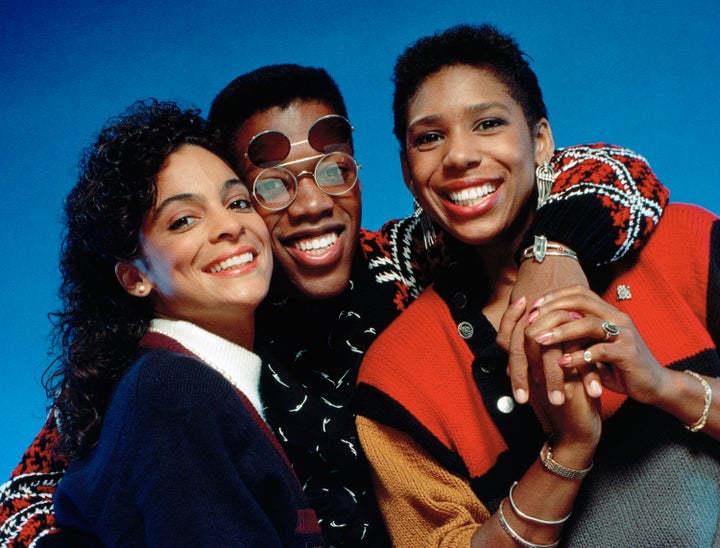
Even today, I know some designers rely heavily on labels and what’s the height of fashion. I couldn’t care less about any of that. I like what I like. I trust my point of view. I trust my instincts. When I do that, it gives me the freedom to select any damn thing I want. I can mix something from Neiman Marcus with something from a vintage store, something from Target with something from Saks. I know what I like, I know quality, I know what I’m looking for. Anything that was made pre-2023 is fair game; I can choose a vast variety of silhouettes, fabrications. There’s so many things that you can choose from, rather than limiting yourself to what’s in style today.
My approach is having a well-defined character. Each of those characters that everybody finds memorable or finds a little bit of themselves in is because they’re well defined. And they’re well-defined because the writers have defined them in terms of the scripts. So it’s my job now to take that, amplify that, give you a visual representation of who these people are, and layer that and make them more real, not so costume-y. As a person, this represents Régine, this represents Khadijah, this represents Max, and they all have their own lane. I think that’s probably some of the reason they’ve lasted the test of time, because you don’t always look at them and say “Oh, that’s 1998 when they wore that.” It’s just, “That looks great.”
Speaking of Régine (Kim Fields), while I know you may not be online, there’s been some discourse from fans alleging that the costume designer behind “The Nanny” pulled the exact same outfits for Fran Fine (Fran Drescher). Have you seen the commentary and if so, how do you feel about it?
They have sent it to me, and it’s so stupid. [Laughs] I don’t know what the designer of “The Nanny” was doing. I love “The Nanny.” That was a great show. It’s fun to watch, and the clothes were fun. But, I mean, you can’t get away from the fact that costume designing for TV, in large part, is shopping and pulling from clothes that are in stores.
Régine the character and Fran Fine the character, I guess in terms of a profile, are similar in that they’re fashionistas. If we both are working on a show in Los Angeles — and there is a red jacket, for example, at Neiman’s, Saks or wherever we shop — it’s inevitable that I may have come across it and said “Oh, that’s amazing. I love it. It’d be perfect for Régine!” and whoever that was on “The Nanny” thought, “Oh my god, that would be perfect for Fran!” I don’t know how it happened, but it’s inevitable. Just like today, I’m sure you can turn on the TV and say, “Oh my god, I saw that on such and such show.” On “Abbott Elementary,” there’s a dress that Quinta has on, and I have the black-and-white version of it, and she’s got the green-and-white version of it. Because we both bought it at Zara, right?! It doesn’t mean that I’m ripping off Quinta’s dress. It’d be nice if she was appreciating my work; that sounds really OK! But I can’t say she wasn’t or she wasn’t. I think it may just be a coincidence.
We’ve talked about how your upbringing has informed your work and career, but how has it shaped your personal style? How would you characterize or describe it? What are some things you gravitate toward?
It’s interesting that you’re asking that question because I feel as though just in the last few weeks, I’ve formulated an answer. I’m very eclectic, and I think sometimes people are; but the way I design, I design a lane for my characters. There’s a range within their lane, so they’re not always wearing the same thing. They definitely have a distinct look, but within their lane. I’ve asked myself, “What is your style, Ceci?” and I think that in every character that I’ve ever designed, including men, it’s a part of me. I’ve expressed a little bit of me onto each of these characters, even the men. I love dressing in men’s vests or men’s suitings; I’ll do a Kyle look just as quickly as I do a Régine look. It’s like a little bit of me has been reflected in all of these characters. My lane is so doggone broad. I love vintage. I love contemporary. I love couture. I love all of it. I don’t think that there’s any one look or vibe that I can say just totally describes me. By and large, I think I’m very eclectic. I don’t know that you can pinpoint my look. I know I gravitate to textures a lot. I love layering, but lots of my characters do that.
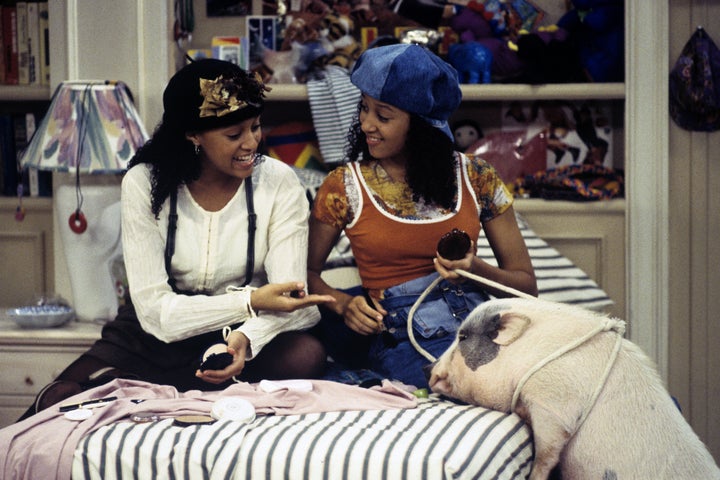
What does it mean to you to see the resurgence of ’90s and Y2K style in television and popular culture?
I don’t pay too much attention to it! I think it comes up with interviews, it comes up sometimes when I’m maybe interviewing for a particular job, and they’re like, “Oh, you’re perfect for this because we want to do a ’90s thing!” and I’m going, “OK, I mean, I’m not sure if in the ’90s, I was doing ’90s.” To a degree, yes, but then I feel like I was always putting my own spin on it. So, was it “the ’90s”? Or was it just that I did it in the 90s?
May 23 marks the series finale of “Sister, Sister” in 1999. Looking back on the show, what was the inspiration when you were styling Tia and Tamera Mowry? I remember envying the matching outfits they wore during their younger years.
With Tia and Tamera, it was interesting because I can always tell the difference between the two — and I was stunned that people couldn’t tell the difference. The producers wanted to make sure that the audience could tell the difference between them, but they also still had to have some similarities as twins. So what I needed to do each wardrobe change was to connect them in some way, whether it was with color stylistically, fabrications, textures. One would be more saucy, spicy and kind of out there, while the other one would be a little bit more conservative, but I always had to play with that dichotomy of making sure that Tia looks like Tia and Tamera looks like Tamera, but they still look like twins. So that was tricky, but it was really fun to do.
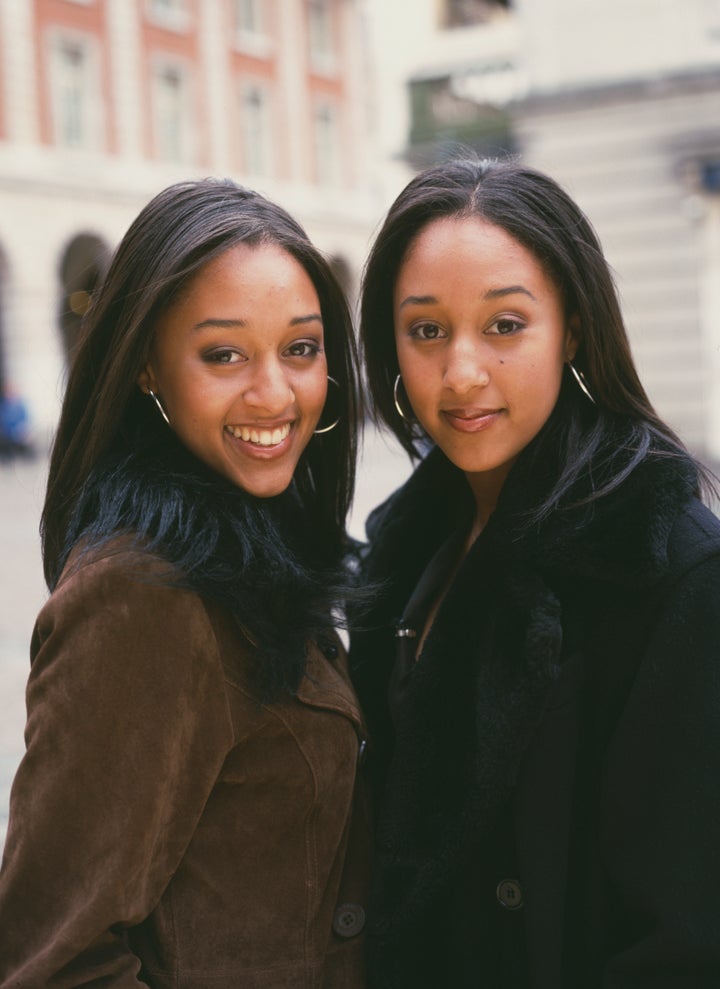
In the later seasons of “Sister, Sister,” we saw the theme song change and most importantly, we saw their style change as they matured. America’s favorite twins went from wearing hats, berets, plaid and overalls to spaghetti strap tops, bell bottoms, leather boots and straightened hair. How were you able to model Tia and Tamera’s growth and evolution as characters while they were navigating adolescence?
Well for them, because they were so young, it was really important. I remember that we couldn’t even curse around them. Just a little anecdote, I ended up working with Tia on “A Black Lady Sketch Show.” That was the first time I had seen her since “Sister, Sister.” We just laughed and I just said, “Oh, my God, I remember always being on pins and needles around you [and your sister]. Like, I can’t say this, we can’t curse around you. Now, you’re a grown woman, you had babies — oh, my God!” [Laughs]
Back to your question, in terms of their evolution, I just had to make sure that they grew up appropriately in terms of being modest, but not being too revealing, not things that were too particularly low-cut. I remember being like, “OK, things don’t have to be all buttoned up; we can show a little bit of something.” Things can be a little bit more form-fitting, the skirts can be a little shorter. So, things that would signify the normal progression of an adolescent to a teen. I remember being able to put a vintage slip dress [on the girls], and that was the thumbs-up. By then, they really trusted me. It was kind of like dressing my own daughters. It’s like, “OK, I want to put you on Front Street, so I’m gonna make sure that you’re modest, but you still look cute and fashion-forward.” There’s ways to do that without being sexualized.
Now, Tia and Tamera were not the only sisters you dressed; you costume designed Mona (Rachel True) and Dee Dee Thorne (Essence Atkins) on “Half and Half,” one of my all-time favorite series. How did you juxtapose those two as fictional half-siblings, and who was your favorite to dress? People loved to rag on Mona back then, specifically her chunky boots.
Are you kidding me?! Mona’s amazing! She was more of the vintage eclectic, layered, chunky jewelry, found objects girl. To me, she was more interesting to look at. Then, Dee Dee was fun to look at because she had money. So, she was more coiffed, I would imagine. Dee Dee was more put-together, more contemporary, more straight-out-of-a-boutique kind of look. Not to say that Mona was sloppy, but if you were to use an analogy: If Dee Dee had a T-shirt, hers probably had some chiffon trim and she’d tuck that into her pants. Whereas Mona might have a rock-and-roll graphic print and have her T-shirt out over a suede skirt from the ’70s. It was definitely distinctly different and easy to make a difference because the characters were so different.
Before the UPN-Warner Bros. merger that created The CW, before the TV writers strike of 2007, it seemed like there was a golden era of Black sitcoms on TV, with shows like “Moesha,” “Girlfriends” and more. How do you think that era compares to the state of Black sitcoms now? And what did the loss of those shows mean for you as a costume designer?
It represented a big loss, because you make your relationships with executive producers and writers that are on the show that you’re working on. I had the great fortune of doing these long, five-year stints with these shows. I was able to move to “Half and Half” because Yvette Lee Bowser [creator of “Living Single”] was able to create that show — and that’s how you get your next job. There was a strong feeling of this hierarchy. But back then, TV was not really the pinnacle of entertainment. I remember going through this interview process with these two white women, and I could tell what they were looking down on the breadth of my experience.
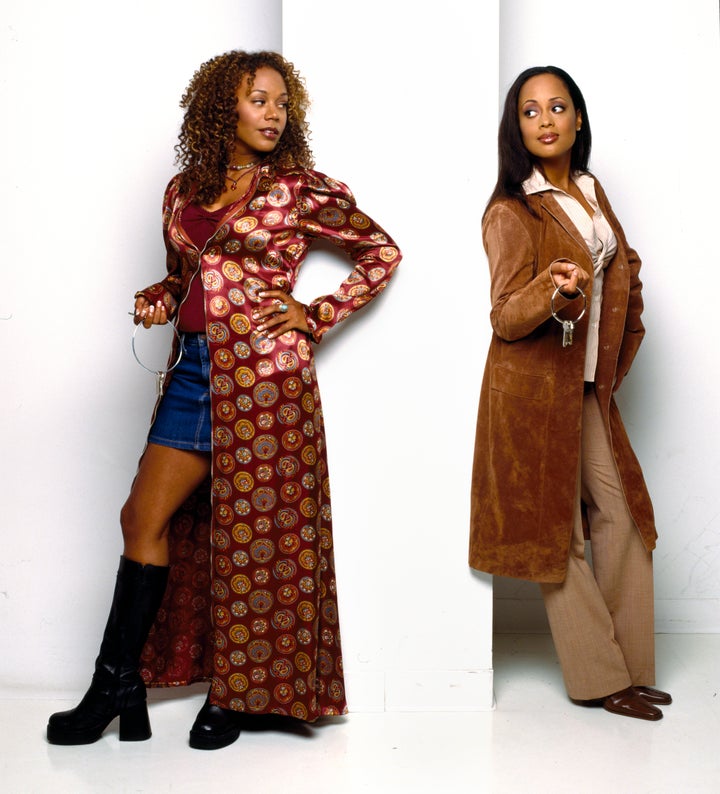
What I’ve been noticing is with the whole Black Lives Matter movement, studios are all trying to check the box of diversity. However, I don’t think it’s going to fully go back to how it was in the ’90s. What I’m seeing now is more inclusion in terms of Black actors in the ensemble; sometimes there’s shows that have majority black actors, but not 100% all-Black actors, like it was in the ’90s. But I don’t think that’s enough at all. I think that there’s so much discussion about diversity, but I think a lot of times it’s just lip service, and it’s just not enough. There’s movies and TV shows that are being done right now with the majority Black actors, but the below-the-line crew does not reflect what’s in front of the camera.
Lastly, what do you want your legacy to be? What do you hope to do next?
Right now, I’m working on a remake of “Don’t Tell Mom the Babysitter’s Dead.” It’s been rewritten with a Black family. But that is a really good question. Because can you plan your legacy? It’d be really nice to be able to say, Yeah, me being here on this planet was impactful. That’s really the legacy that I want to leave. I did something that made a difference, and that moved us as Black people just a little bit further and that helped us in some sort of way. Even with my crew, I have such a dedication for hiring people of color, and I want to be known for that also. That’s important to me.
